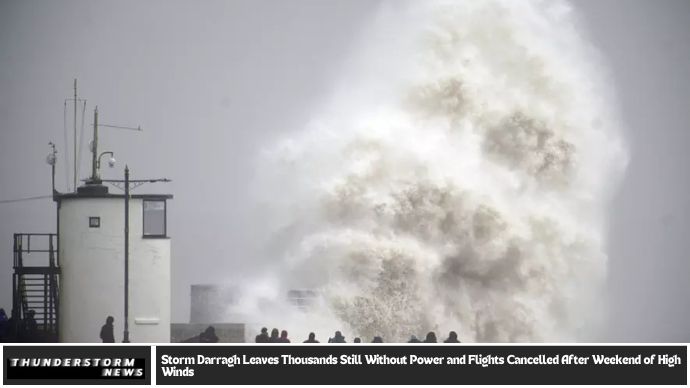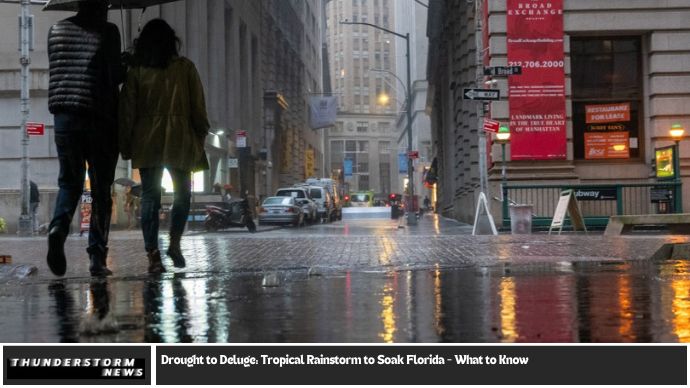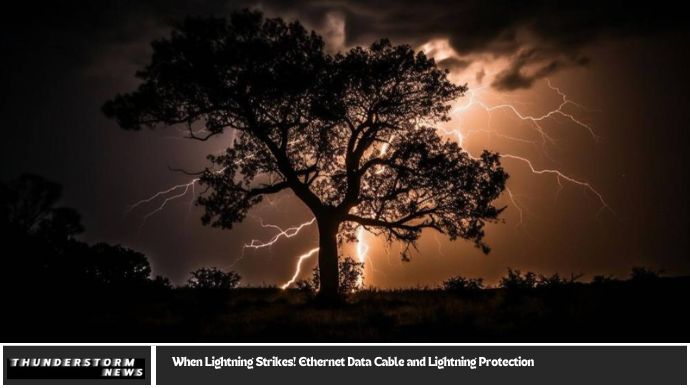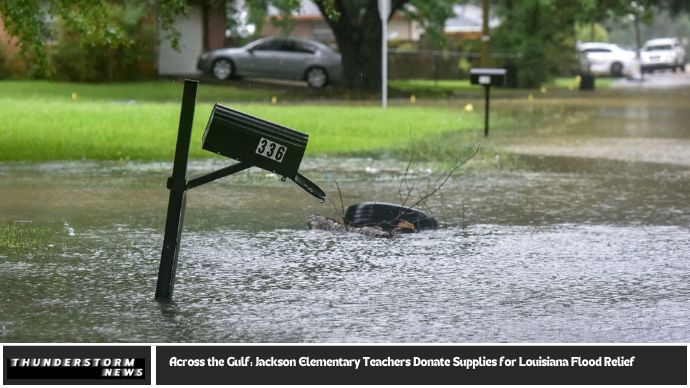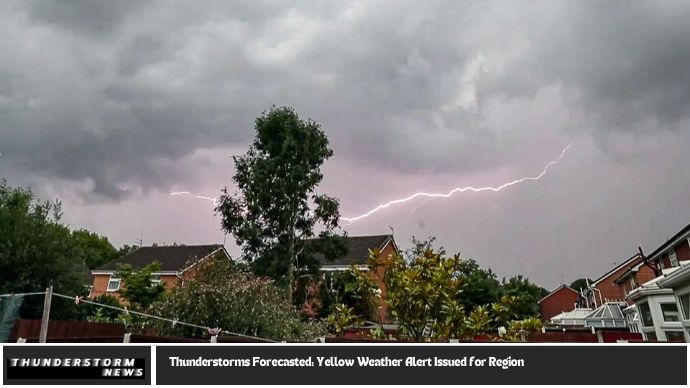Storm Darragh, which hit over the weekend, has left a trail of disruption across the country. Thousands of homes are still without power, and flight cancellations have caused major travel headaches for passengers. The powerful storm brought high winds, heavy rain, and widespread damage, making it one of the most impactful storms in recent weeks. As authorities work to restore power and clear debris, many are left wondering when life will return to normal. In this post, we’ll take a closer look at the impact of Storm Darragh, the ongoing challenges, and what steps you can take to stay safe and prepared during severe weather events like this.
What We Know About Storm Darragh’s Impact
Over the course of the weekend, Storm Darragh wreaked havoc across large parts of the country. High winds, which reached speeds of up to 80 mph in some areas, brought down trees, damaged buildings, and left thousands of homes without power. Emergency services have been working around the clock to restore electricity, but the recovery process is slow, with some areas expected to remain without power for several more days.
In addition to power outages, the storm caused significant disruptions to air travel. Several major airports saw flight cancellations due to dangerous conditions, with planes grounded or diverted to safer locations. This has left travelers stranded, causing frustration and uncertainty for those hoping to reach their destinations.
While the worst of the storm may have passed, the aftereffects are still being felt. The cleanup process is underway, but authorities are urging the public to remain cautious as high winds persist in some regions. The damage caused by Storm Darragh highlights the importance of being prepared for extreme weather conditions and knowing what steps to take during a storm.
Why Is Storm Darragh Causing Such Widespread Disruptions?
Storm Darragh’s high winds and heavy rainfall have led to significant disruptions across various sectors. The storm’s strength is partly due to a combination of factors, including low-pressure systems and atmospheric instability, which have contributed to its intensity. The storm moved quickly, catching many off guard and causing damage that was harder to manage due to its rapid onset.
For residents, the primary concern has been the widespread power outages. Strong winds uprooted trees and caused power lines to snap, while flooding from heavy rain made it difficult for crews to access certain areas for repairs. Local utilities and emergency services have prioritized restoring power, but the sheer volume of affected homes has slowed the process.
Airlines were also caught off guard, with the unpredictability of the storm contributing to flight cancellations. Airports, particularly those in areas with higher wind speeds, faced safety concerns due to the risk of debris on runways, making it unsafe for aircraft to take off or land. Passengers have been advised to check with airlines for updates, as some flights may be delayed or rerouted.
How Long Will It Take for Power to Be Restored?
The restoration of power has been one of the most pressing issues since Storm Darragh’s passage. Emergency response teams are working to clear fallen trees and debris from power lines, but the process is taking longer than expected due to the severity of the storm’s impact. According to reports, some affected areas may not have power restored until the middle of the week, and certain remote areas could take even longer.
If you’re one of the thousands still without power, it’s important to stay updated through your local utility company’s website or customer service. Many providers are offering information on the expected timeline for power restoration, and you may also receive text or email alerts when your service is back online.
What Should You Do If You’re Still Without Power?
If you’re still without power after Storm Darragh, there are several steps you can take to stay safe and minimize inconvenience:
- Use Flashlights and Batteries: Avoid using candles, as they can pose a fire risk. Instead, keep flashlights or battery-operated lamps handy.
- Keep Food and Water Supplies: If the power outage is prolonged, ensure you have enough food and water for at least 48 hours. Non-perishable items are best.
- Stay Warm: If the weather is cold, wear extra layers of clothing, and use blankets to stay warm.
- Check on Vulnerable Neighbors: If possible, check on elderly or vulnerable neighbors who may need assistance during the outage.
- Avoid Using Generators Indoors: If using a backup generator, ensure it’s placed outside to prevent carbon monoxide poisoning.
- Monitor Updates from Authorities: Stay informed about when power will be restored and any safety warnings issued in your area.
How Did Flight Cancellations Affect Travelers?
Storm Darragh’s impact on air travel has been widespread, with several major airports reporting delays and cancellations. High winds and poor visibility made it unsafe for aircraft to take off and land, causing massive disruption to both domestic and international flights. The storm caught many travelers off guard, leaving them stranded at airports or forced to find alternative routes to their destinations.
Airlines and airports have worked to accommodate passengers affected by cancellations, offering rebooking options and updates through their websites. However, with the ongoing disruption, many travelers are still struggling to find available flights.
Travelers affected by Storm Darragh’s impact on air travel should:
- Contact Your Airline: If your flight has been canceled or delayed, get in touch with your airline to discuss rebooking options.
- Check Flight Status Online: Stay updated on your flight status through your airline’s website or mobile app.
- Consider Alternative Travel Routes: If flights are unavailable, explore alternative transportation methods such as trains or buses.
- Be Prepared for Extended Delays: Storm recovery efforts are ongoing, so it’s important to be prepared for continued disruptions.
Is Storm Darragh Over?
While the worst of Storm Darragh has passed, its lingering effects are still being felt. High winds and heavy rainfall have subsided in most areas, but there are still pockets of disruption. Some regions are experiencing ongoing strong gusts, and authorities are advising residents to remain cautious, particularly in coastal and high-altitude areas where conditions can change quickly.
The clean-up process is ongoing, and power restoration efforts are underway. It will take time to fully assess the damage and ensure all affected areas are restored to normal. Local authorities will continue to monitor the situation closely and provide updates as needed.
May you also like it:
The Role of Tree Surgeons in Environmental Conservation
How to Prevent Your Trees From Falling During Storms
How Tree Maintenance Can Prevent Storm Damage
Broomfield Students Pile Up Donations for Their Flooded Peers
FAQs
1. How many people are still without power after Storm Darragh?
Thousands of people remain without power, particularly in areas where fallen trees and damaged power lines are slowing the restoration process. Updates from utility companies indicate that power may be restored in stages.
2. How do I check if my flight has been canceled due to Storm Darragh?
Check your airline’s website or app for updates on cancellations or delays. You can also contact your airline directly for more information about rebooking options.
3. How long will it take for power to be restored in my area?
The timeline for power restoration varies depending on the severity of the damage. Utility companies are providing estimated restoration times, with some areas expected to be restored within 48 hours.
4. Is Storm Darragh over, or are more storms expected?
While the worst of Storm Darragh has passed, some regions are still experiencing high winds. No further major storms are expected immediately, but weather conditions should be monitored.
5. How can I prepare for a storm like Storm Darragh in the future?
Prepare by securing outdoor items, stocking up on emergency supplies, and staying informed through weather alerts. Have a plan in place for power outages and flight disruptions.
6. Will flights be back to normal soon after Storm Darragh?
Airlines are working to clear delays and cancellations, but some disruptions may continue for a few more days as airports and airlines manage the aftermath of the storm.
Conclusion
Storm Darragh has left a significant mark on the country, with thousands of people still without power and major disruptions to air travel. While the storm’s high winds and rainfall have subsided, the aftermath continues to cause problems for those affected. Whether you’re dealing with power outages, canceled flights, or trying to navigate the clean-up, staying informed and prepared is key to managing these difficult conditions. Keep monitoring updates from local authorities, and remember that recovery efforts are underway. Stay safe, and be patient as normal services gradually resume.

